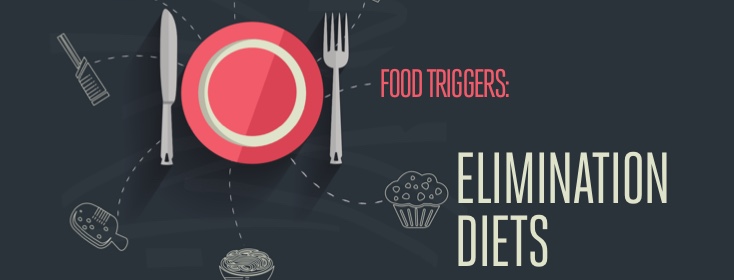What's an Elimination Diet and How Do I Manage One?
The term "elimination diet" sounds like you're eliminating certain foods from your diet. Period.
What is an elimination diet?
It actually means that you temporarily eliminate certain foods, then test to see which foods are problematic for you. It is not intended as a permanent change to your diet. Here's what you need to know before you embark on an elimination diet.
How does it work?
An elimination diet is an experiment. You remove certain foods or food chemicals from your diet for a short time. After you're symptom-free (or have reduced symptoms) for a while, you slowly add foods back in to see if they trigger a migraine. The recommended time to wait before reintroducing a food varies from several weeks to four months; in my experience, about six weeks is sufficient. Once you've determined a food or food chemical isn't a trigger, it can go back in your diet. ("Food chemical" doesn't necessarily mean something artificial added to foods. All foods are made up of naturally occurring chemicals and some have artificial chemicals added to them. Migraine trigger foods are generally from a wider category of naturally occurring food chemicals, like tyramine, nitrates/nitrites, or sulfates/sulfites.)
Is it hard to do?
Elimination diets can be overwhelming and frustrating at first. There's a lot of confusing information and food lists to reconcile. It can take time to settle into a rhythm and, even then, you'll probably resent the restrictions. You will get fed up and wonder if there's any use to it. You will make mistakes. You will sometimes decide that it's more important to eat your favorite food than it is to stick to the diet. All these things are almost inevitable. It's important to go easy on yourself and remember that you're learning something entirely new. You wouldn't expect a child to ride a bike the first time they saw one; doing an elimination diet isn't all that different.
What can I even eat?
"If I cut out all those things, there's nothing I can eat!" is a nearly universal reaction. No matter what the elimination diet, most people look at the restricted foods and think they're nothing they can eat. While it seems that way at first, there's actually quite a bit of leeway, though you may have to get creative or go outside your comfort zone. You may even discover new foods you love or that you like foods you previously disliked (mango, persimmons, teff, and fennel are all on that list for me). You can choose to stick with a repetitive diet for a few months, just make sure you're eating lots of vegetables, fruit, lean protein, and whole grains so you stay healthy.
Can I still eat nutritious meals?
Good nutrition is still possible with the standard migraine elimination diet. As I mentioned above, be sure you eat plenty of vegetables, fruit, lean protein, and whole grains – all part of any healthy diet – and you should do just fine. If you're nervous, you can enter the foods you eat into Self's nutrition database to see if you're meeting all your nutrition requirements. You can also ask your doctor for a referral to a dietician. Even if the dietician isn't familiar with migraine, you can present them with the foods and food chemicals you're trying to avoid and they can help you develop a nutritious diet.
Are they a lot of work?
Elimination diets require time and attention. If you already make most of your food from scratch, you'll have a bit of a learning curve to figure out what you can and can't eat, but the cooking won't be much of an additional time commitment. If you rely on a lot of convenience foods or eat out a lot, you'll probably spend a lot more time on food. You'll need to read labels at the grocery store and spend more time preparing food or cooking. It helps to think of this as a time-limited project. You're doing an experiment to see which foods are problematic for you, not revamping your diet for the rest of your life.
How can they help?
Keeping the potential outcome in mind is helpful. For someone who has food triggers, determining what those triggers are is freeing and instills a sense of control over migraine attacks. It can reduce the number of medications and supplements you take or eliminate them entirely. There aren't enough adjectives to describe how great this is. Even if you're unable to find food triggers from this particular elimination diet, you'll have more information about your migraine triggers than when you started.
The next article in our food trigger series will address which foods you should avoid during the first stage of a migraine elimination diet.
Community Poll
Do you feel comfortable advocating for yourself to your healthcare provider?

Join the conversation